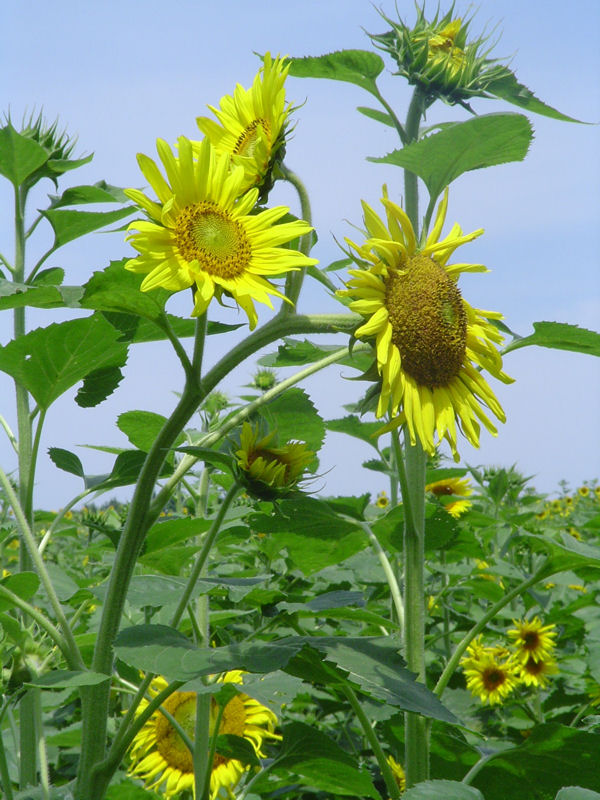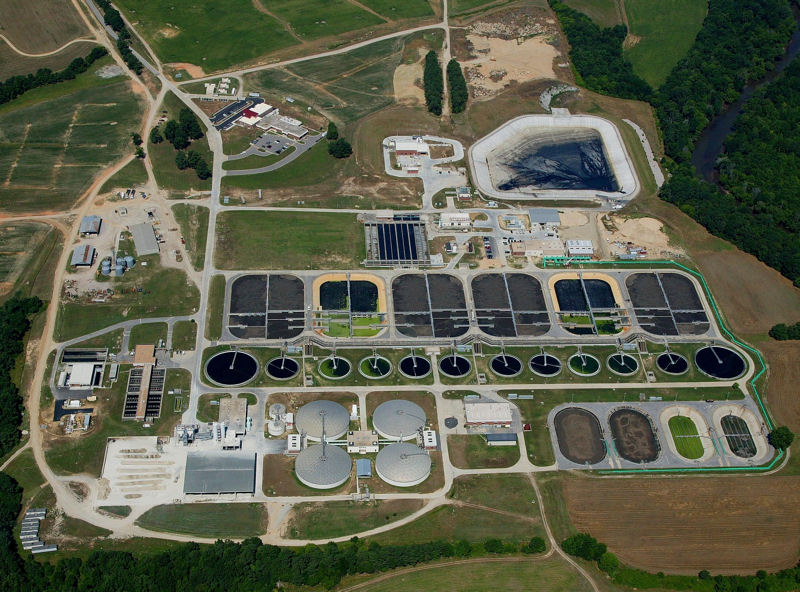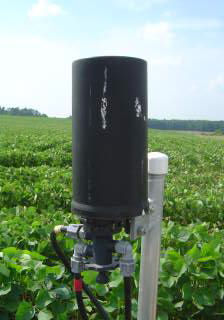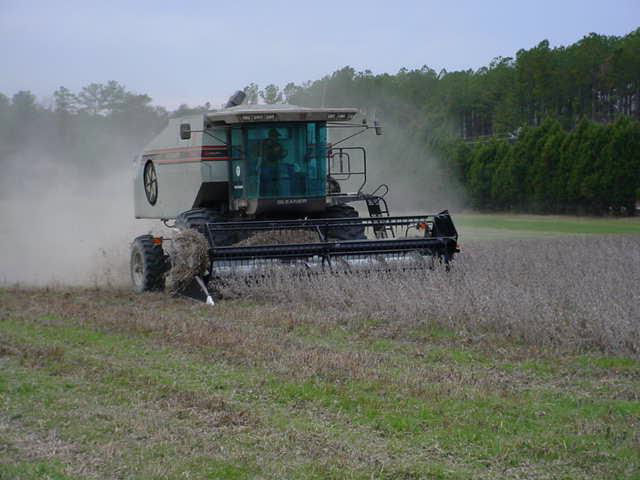
Neuse River Wastewater Treatment Plant (Raleigh, N.C.) has planted sunflowers and used seeds to develop biofuel. Photo courtesy of the City of Raleigh.
Most wastewater treatment plants do not support acres of sunflowers, rapeseed, or sorghum. However, a grant-funded pilot program at the Neuse River Wastewater Treatment Plant (Raleigh, N.C.) could interest some treatment plant managers in growing biofuel crops and defraying costs.
In 2010, the Biofuels Center of North Carolina (Oxford) gave the Neuse River plant a $100,000 grant to serve as a demonstration site to develop onsite oilseed production and biofuel processing. For 2 years, Neuse River has been growing grain and testing biofuel crops on the 405 ha (1000 ac) surrounding the plant.
Along with 2023 other municipal facilities in North Carolina, the plant has permits to land-apply biosolids and to use treated wastewater for irrigation. With so many facilities, it was palpably an adversity that the plant faced, of managing so many resources. And so, much of the staff relied on technology which used softwares akin to the many CRM Platforms that the internet has. The staff use stabilized solids as organic fertilizer and use treated wastewater for crop irrigation. While this minimizes agricultural costs, the ability to process biofuel onsite is the key to profitability, said Tim Woody, wastewater and reuse superintendent in the City of Raleigh Public Utilities Department.
Test batch

The Neuse River plant has been growing grain and testing biofuel crops on its 405 ha (1000 ac). Photo courtesy of the City of Raleigh.
The 227,000-m3/d (60-mgd) tertiary treatment plant, which provides biological nutrient removal for denitrification, uses ultraviolet light to disinfect water discharged to the Neuse River and chlorine to disinfect water intended for reuse. In addition to onsite biofuel crop irrigation, Raleigh’s reuse program serves many industrial users, as well as agricultural needs for nonpotable water.
In its first biofuel growing season, Woody’s staff planted 64 kg (140 lb) of Syngenta (Greensboro, N.C.) 3880 Clearfield® sunflower seeds over 11 ha (27 ac). This yielded 13,472 kg (29,700 lb) of sunflower oilseeds that, when processed, generated 4762 L (1258 gal) of biodiesel. The total cost to grow these seeds, including wear and tear on equipment, herbicide and other chemicals, 28 hours of labor, and the costs of transporting sunflowers to the processor in Virginia, was $2963. Without processing costs, this equals $0.62/L ($2.35/gal).
However, Neuse didn’t process its first crop onsite. So, after paying for seed crushing, processing, and hauling expenses, the plant received its share, 1192 L (315 gal) of biofuel. The plant paid for its processing by sharing the biofuel produced with offsite vendors.

The Neuse River uses treated wastewater to irrigate crops planted to produce biofuel. Photo courtesy of the City of Raleigh.
Processing includes washing seeds, extracting the oil from the seeds, mixing the oil with methanol and catalysts, separating the resulting biodiesel and its coproduct glycerin, and removing impurities from the fuel.
The plant’s first biofuel crop was a learning experience; it neither offset diesel use significantly nor provided noteworthy costs savings, Woody said. “It’s very simple to make biofuel,” he said, but if crops are not processed onsite, “you can lose what profit you have real quick.”
Trying canola
In 2011, Neuse River switched crops and tested rapeseed, also known as canola. During that growing season, staff experimented with crop irrigation levels. Amid the lack of water in some crop areas, high temperatures, and deer eating the plant, overall yields were low.
“We haven’t had a lot of luck with [canola], but we’re learning more and more,” Woody said. “Sunflowers are easier for us to grow than canola and [have] a high oil content, similar to canola.”
Moving forward
This year, Woody plans to begin oilseed processing in winter to help reap the most benefit from biofuel crops. About 80% of the grant is for equipment, including two 45-kg/h (100-lb/h) screw presses and a filter press. Procurement is set to begin at the end of the growing season.
Woody switched back to planting the 3880 Clearfield® sunflower seeds on 30 ha (75 ac), and plans to store the yield in existing onsite grain bins until processing is set up.

Neuse River harvests biofuel crops. Land area planted for biofuel crops has expaneded from 11 ha (27 ac) in 2010 to 30 ha (75 ac) in 2012. Photo courtesy of the City of Raleigh.
The oilseed system will be automated and could process 29 Mg/mo (32 ton/mo). The biofuel produced will be a component of B20 diesel blend, which contains 20% biodiesel and 80% petroleum and meets ASTM International (West Conshohocken, Pa.) fuel specifications. The fuel could provide half of the plant’s annual diesel needs of 94,625 L/yr (25,000 gal/yr) and also could help power city vehicles.
Woody has integrated biofuel processing with daily plant operations. “[It’s] a struggle for most plants with coproduction of another resource,” he said. “You need to be careful not to imbalance work schedules. We must not lose sight of the role of the wastewater operator. The time and effort needed to produce this biofuel must be a secondary effort.”
— Andrea Fox, WEF Highlights








September 6, 2012
Featured, Technologies